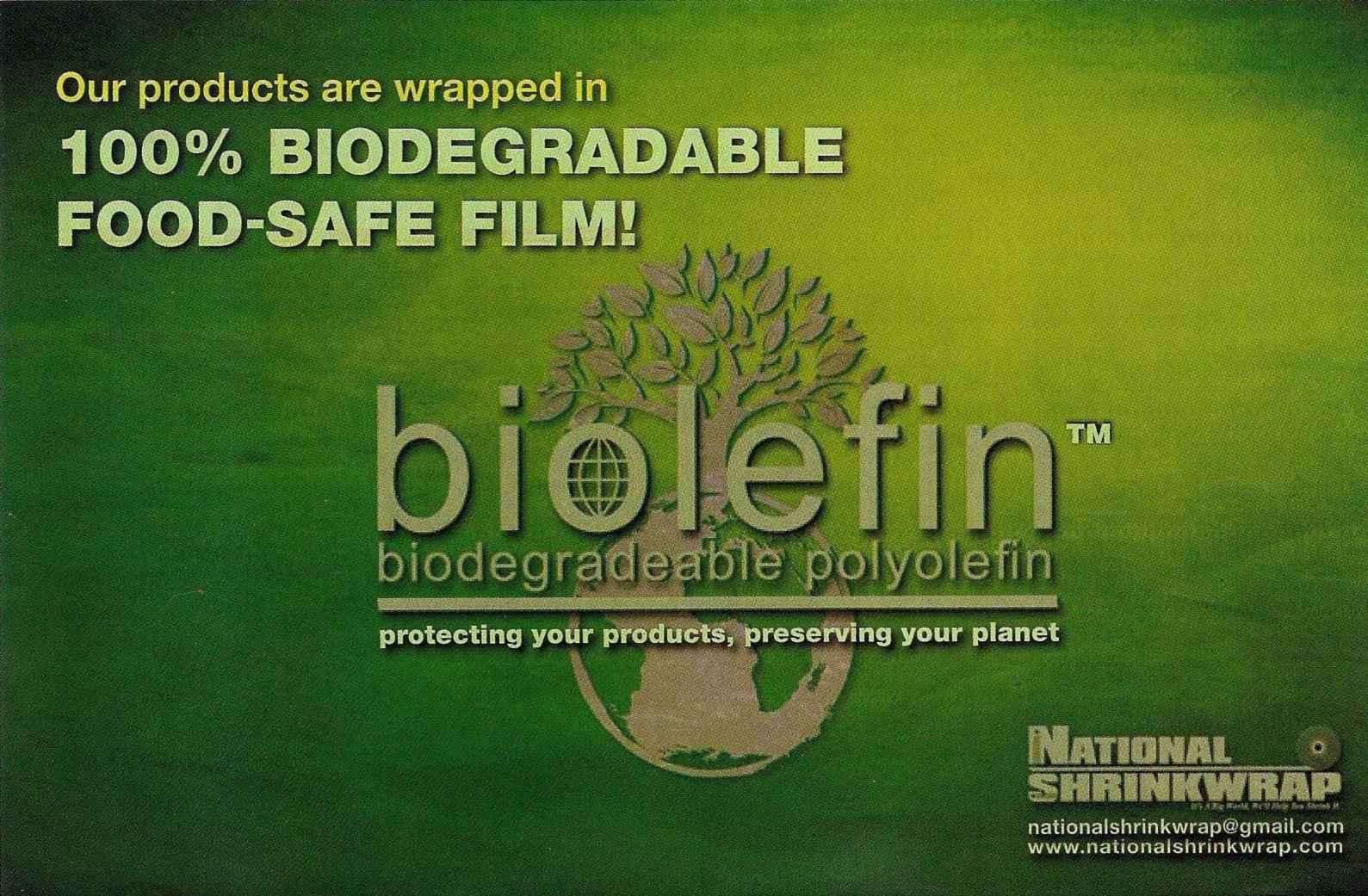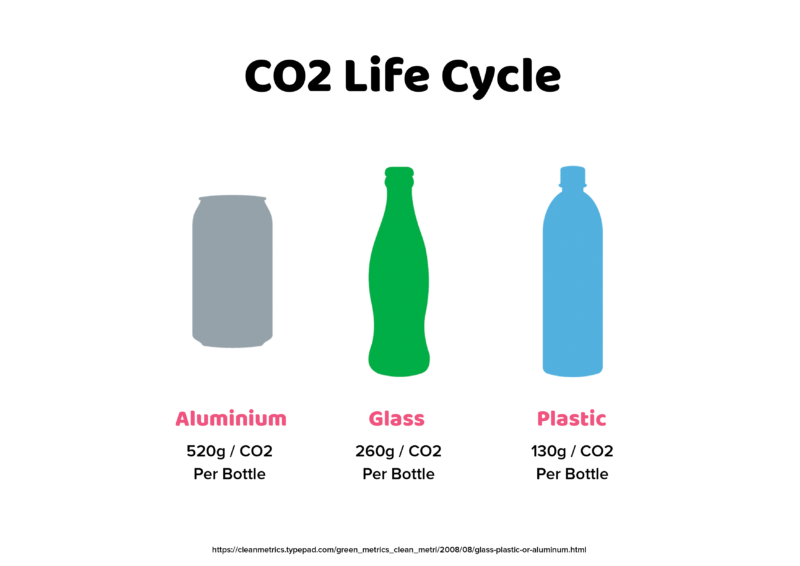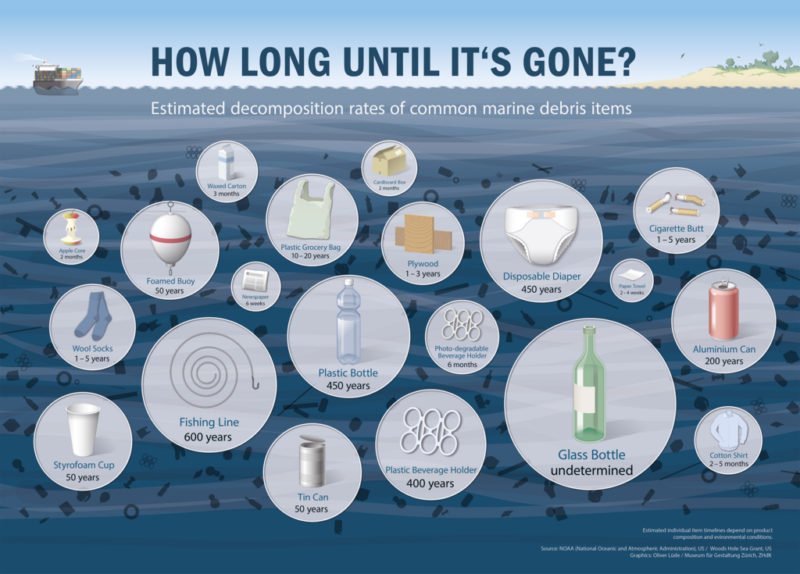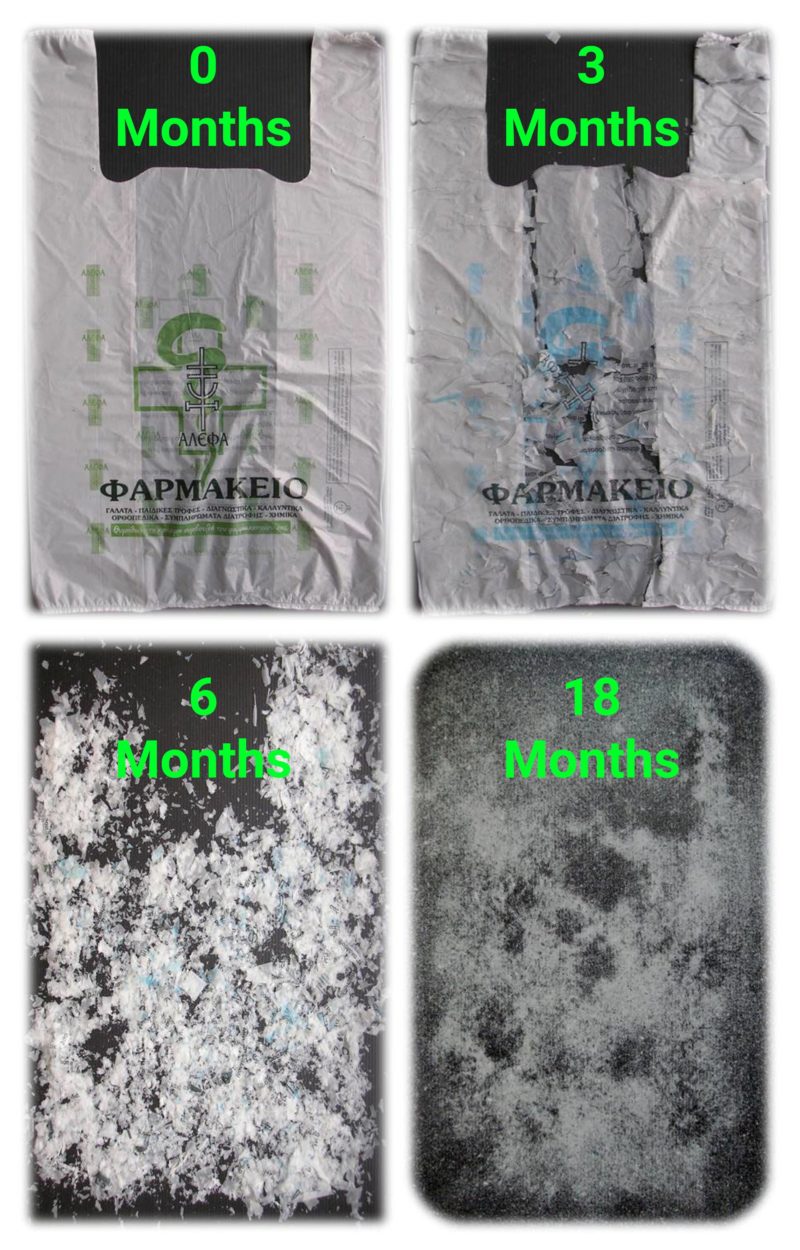About Biolefin Biodegradable Heat & Shrink Wrap Plastic
Let us ask you this, what if there was a plastic shrink wrap that breaks down into plant food and biomass in the space of 2 – 3 years instead of 40 – 50 years for normal cling film and other shrink wrapping material. Would your current attitude toward plastics change?
Is Biolefin TM 100% biodegradable plastic the answer to our worlds plastic woes?
Plastics Are Not The Problem!
What everyone seems to conveniently forget about plastics is that they have helped save us from a post-apocalyptic, strip-mined, barren, and possibly lifeless planet. To put it in perspective, “Humans have made 8.3bn tons of plastic since 1950” [8].
If we tried to produce the volume of plastic we have created over the last 50 years using alternatives such as glass, Aluminium or even paper, we would have literally strip-mined every beach, forest and Bauxite deposit (Aluminium) the world over. Reef Repair
We would all be choking violently on runaway CO2 (carbon dioxide) emissions that far outweigh what we have already contributed. Remember, CO2 is bad and we are literally killing ourselves with the volume of it we already contribute to the earth each year, so more CO2 is a negative thing regardless of the outcome.
If we had of made 8.3bn tons of Aluminium instead of plastic, we would have also produced four times the amount of CO2, glass is not much better and that really just leaves us with plastics.
Plastic production is simply not the problem, it is how we deal with plastic after we are done using it and our over-use of it, that is the real issue threatening our environment, oceans and marine life.
Normal Plastics Last For Hundreds of Years
We are not debating whether plastics in our environment are a problem, they most certainly are! This is due in part to their unique ability to not biodegrade, and even when they begin to breakdown, they breakdown into environmentally toxic smaller pieces called microplastics. Those microplastics have now entered the human food chain [2], and that’s bad news.
To put something complex into very simple terms. We are all very much responsible for the plastics choking our oceans, rivers, and waterways. We were the ones who threw it away into trash bins, landfills, and rivers where it has now become a world-wide problem.
This is why the war on plastic began in earnest, we should all use less plastic thereby protecting our environment and marine life, seems simple right? Except for the fact that the war on plastic has got out of hand in a big way and suddenly, all plastics, regardless of their type or function have come under heavy scrutiny.
That is where we went wrong a second time; because what we dutifully need to remember is this…
Enter Biolefin TM Biodegradable Plastic
We asked earlier in this article whether or not your opinion on plastics would change if there was a plastic…
Whether you answered yes or no is important here, because we as humans are always going to need plastics. There is no going back to a pre-plastic era. From now until likely forever (pun intended), plastic is going to be a big part of our lives.
So is Biolefin TM an environmentally responsible plastic that will not persist in the environment? Won’t choke marine life to death in our oceans? Does not poison us if it accidentally enters the food chain?
Let’s get sciency on Biolefin TM 100% biodegradable shrink-wrap plastic.
Biolefin TM – Firstly, What Is It?
At the end of the day Biolefin is plastic. It is made from a combination of component materials…
Polypropylene and Polyethylene come from the petrochemical industry and are what your shopping bags and many other common household single-use plastics are made from. So this isn’t an ideal start, if the mix were 100% made from those first two petrochemicals, we’d simply have a normal plastic that could persist for up to 500 years in the environment.
But, Biolefin TM is very different. Biolefin contains an additive that turns a normally environmentally persistent plastic into one that biodegrades harmlessly in record time (2 – 3 years) and breaks down into harmless component elements and biomass, instead of toxic micropollutants.
This additive is known as Reverte TM and in the interest of brevity, you can find out more about it via that link.
Biolefin TM – The Science
Normal plastics can’t effectively be eaten by microorganisms such as bacteria, fungi, and algae because most normal plastics have something called “long strand polymer chains” binding them together. This gives plastic its stretchability and strength, but it also makes it impossible for the environment to deal with them naturally.
The Reverte TM additive simply helps turn long strand polymer chains into much smaller lengths, by…
Reducing the chain length of the polymer … making it brittle and non-plastic. The biodegradability aspect refers to the conversion of these strands … to much lower lengths … for conversion by bacteria into biomass. What is Reverte
Simply put, the Reverte additive breaks down the plastic structure into bite-sized pieces for bacteria and microorganisms to deal with, as nature intended. In so doing, converting into base elements like H2O (water) and biomass, that harmlessly enter back into the soil or environment [5].
But it gets even better!
Biolefin TM – Is Oxo-Biodegradable
What the heck does “Oxo-Biodegradable” mean? Well it sort of means this, for our non-science readers.
Oxo-biodegradable plastic products are bio-assimilated in the same way as nature’s own wastes. What is Reverte [5]
Meaning that Oxo-Biodegradable products will be broken down without any other external inputs other than what nature would inflict upon ‘set plastic item’ normally, such as UV radiation (sunlight), soil acidity and atmospheric conditions like temperature. Nature breaks down Biolefin the exact same way as nature would breakdown a leaf!
Nothing else needs to happen to Biolefin plastic if it gets thrown away carelessly or by mistake. No chemical treatments, no factories, no burning, nothing. Nature simply takes over and requires no more help from us humans, to eat (biodegrade) this plastic should it be discarded incorrectly into the environment.
Cool right? Well, wait, it gets even better.
Biolefin TM – Is Photo-reactive
We mentioned above how the amazing biodegradability properties of Biolefin TM are due to the special additive Reverte TM. Reverte helps chop up the long-chain polymer strands of the plastic into much smaller strands so that bacteria, fungi, mold, and algae can eat it up and convert it to biomass.
But Biolefin wouldn’t be a very useful plastic if this process happened immediately, it wouldn’t even be remotely marketable either. So to ensure the product is fit for use in industry and retail, Biolefin only…
fragments and oxidizes … when exposed to sunlight … It then becomes edible by soil microorganisms, and eventually disappears, leaving only water, carbon dioxide and biomass. What is Reverte [6]
Biolefin can actually persist on a shelf or factory floor for somewhere between 1 – 2 years safely without bio-degradation or flaking occurring. But outside in nature the bio-degradation process is activated and it’s “Adiós Muchachos” for the plastic. Also, if the Biolefin is exposed to constant sunlight while discarded, say floating around on top of the ocean, it will break down even faster!
Awesome right? Well, wait, it gets even better.
Biolefin TM – Is Compostable At Industry Level
Biolefin is compostable with a commercial grade composting unit or a commercial composting facility.
While it will actually compost in a window-box or backyard composting unit, it will not do so in a time-frame that allows it to be considered compostable with other organic waste from say meal preparation. As stated previously Biolefin will degrade if not fully compost in around 2 – 3 years, which is better than 4 – 5 decades for normal shrink wrap!
Savvy composters will know they have to keep this in mind when adding elements to a compost, so it’s good information to be aware of if using Biolefin at home.
Biolefin TM – Biodegradation Safety
As we mentioned earlier in the article, most common plastics as they slowly biodegrade, will actually just turn into smaller pieces of plastic over time. We call those pieces, microplastics, and they are seriously bad news [7].
Biolefin actually converts into many different things such as water, hydrogen, oxygen, and CO2 [6]. Ok so that last one isn’t great, but every dead leaf and twig on the ground is also converting into CO2 as well.
Nature has ways of dealing with biomass on the ground converting into CO2, but nature is very bad at dealing with us pumping thousands of tonnes of CO2 into the atmosphere every minute.
So pick your battles wisely I guess.
Biolefin TM – Biodegradability Time Frames
Very few things on this earth are exact, and sadly the bio-degradation time frame of Biolefin is also non-exact. The process of bio-degradation will be dependent upon heat, sunlight, temperature, soil organisms, water and potentially hundreds of other factors will play a part.
According to the specs sheet, biodegradation of Biolefin will occur and complete…
over a period of 2-3 years, comparable with most natural materials and completely satisfactory from an environmental viewpoint. What is Reverte [6]
Some references cite as long as five years for Biolefin to be completely degraded into biomass, but that is a heck of a lot better than 500 years when compared to normal plastic bags from the supermarket.
At the end of the day, the biodegradation rate is simply dependent on the environmental conditions in which the item is exposed. This is in fact true for all biodegradable materials whether it be grass cuttings, straw or oxo-biodegradable products such as Biolefin.
Why Use Biolefin TM At All Though?
Lets put it in the case of why, Reef Repair, needed to start using Biolefin shrink wrap and to explain why plastics like this are going to be around for a long time yet.
Every soap, shampoo bar or conditioner bar we manufacture must have a shelf life of around 24 months (2 years) for them to go to retail stores and sit on shelves. If we can’t meet that criteria, we can’t sell it via retail, stores don’t want products that go bad in 6 – 12 months.
Achieving a 24-month shelf life isn’t easy for 100% natural products. You will need robust packaging that will help protect a product from moisture, excessive heat, sunlight, oxidization and especially airborne bacteria and molds. Plastic shrink wrap helps you do that by giving the product an extra layer of protection.
Our shampoo, conditioners, and soaps use a combination of natural preservatives and oils. Because of this, we had issues in the past with the bars wilting from heat especially here in Thailand. The Plastic shrink wrap also prevents this “melting” of the bars and we achieved a 2-year shelf life, which is required for retail and distribution via Amazon and our other distributors.
Essentially we trialed several different approaches to answer the above problem like wrapping bars in thick wax paper and even aluminum zip-seal pockets, but nothing worked correctly. For instance, the Aluminum pockets actually trapped heat more, melting the bars quickly if not refrigerated. Eventually, a choice had to be made between using longer-lasting but harsher chemical preservatives in our products (nope), or use plastic shrink wrap to protect and secure them.
After many many months of research, we stumbled upon Biolefin TM and decided to give it a test run. As you can tell from this article we have been diligent in ascertaining just how environmentally friendly the plastic wrap is and probing the wrap for any biological weaknesses.
Biolefin TM Amazing Food Safe Shrink Wrap
Shelf life is also not the only concern that manufacturers and retailers have with cosmetic or food-based products. Let us list some other concerns that are extremely important for cosmetic packaging in regard to our own products.
It is a well-known fact in retail that customers like to visually inspect an item before they buy it. That means 100% clear transparent packaging so that they can see what they are purchasing. This holds true for our soaps, conditioner and shampoo bars. In many cases, pictures are not enough and customers enjoy picking up the item, opening the box and visually inspecting the product. After all, who wants an ugly bar of soap in their bathroom?
The next thing a customer will do is smell the product. If your packaging hides the smell and all they get is a whiff of their own hands, you might not make a sale. Visual and olfactory triggers are critical for retail purchasing decisions. Biolefin lets us maintain those benefits because it is permeable enough to allow the scent of products to waft through the packaging.
Heat shrinking plastic wrap is also very important because it makes a product look more professional, pack easier and store for much longer. Biolefin is a shrink wrap designed to be heat shrunk around products. It works fantastically well for this application in our own experience.
Lastly, product scratch protection is important. You don’t want a shrink wrap that tears every time someone touches or handles it, that’s going to mean a lost sale due to a perceived damaged or pre-opened item. If you ever worked in retail you know exactly what we are talking about. Biolefin once heat-shrunk is very robust. It is easy to remove from a product when opening, but not easily damaged by curious customers, mishandling, incorrect storage or rough shipping procedures (USPS).
In summary, Biolefin helps Reef Repair keep our products safe from harm and available on shelves all-year-round, minus the guilt of contributing any long-lasting plastic wrappers to the environment with our sales.
Biolefin TM Drawbacks & Problems
As a company that produces environmentally friendly ocean and coral reef safe cosmetics, we truly don’t want to support the plastics industry at all, in any way.
So, the only real drawback for us is that the base polymers in Biolefin are petrochemicals (Polypropylene and Polyethylene). We hope one day to see bioplastics made from plant polymers like those that can be made from Hemp and Corn Starch, that maintain all the necessary retail properties that Biolefin has.
Sadly, as at the time of writing, there is no heat or shrinkwrap made from plant-based materials that will bio-degrade as effectively, safely or in the same time frames that Biolefin does. In fact, many plant-based plastics require costly recycling centers and additives to break them down correctly.
Biolefin TM seems to solve quite a few issues all at once, as long as you can justify keeping the petrochemical industry around a little while longer.
Summing It All Up
Plastics are not going anywhere anytime soon. Plastics are so deeply ingrained and so intrinsically important to our current way of life that they will be with us long into our future.
The best thing we can all do to promote a healthy environment and safety for marine life is to ensure that we start using plastics responsibly in our everyday lives. For Reef Repair that means responsible packaging and we do strive to use as little packaging as possible, we recycle everything and when we find need to use plastics, we do our research and you can too.
You can easily find products like Biolefin shrink wrap online, and the advantages to our environment are immense. Just imagine for a brief second if every piece of plastic in the ocean, landfill or river beds right now was going to simply disintegrate into nothingness in 2 – 3 years. We wouldn’t have to spend the next couple of decades cleaning it all up!
A plastic pollution-free future almost sounds to good to be true, but products like Biolefin biodegradable plastic can offer it to us. Especially if we continue to reduce, reuse and recycle a little better in our everyday consumer-driven lives.
Thanks for reading, happy diving, and please stay safe in the sun!









 (24 votes, average: 4.63 out of 5)
(24 votes, average: 4.63 out of 5)



